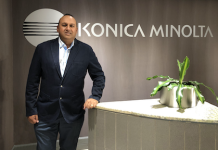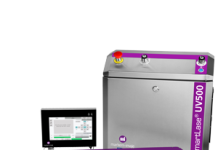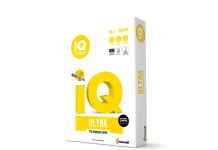The Commercial Day 2019 was recently hosted at Heidelberg’s Wiesloch-Walldorf site. New opportunities for the printing industry were discussed, as well as what is needed to achieve the greatest possible overall productivity.
‘We find ourselves in a transition from an analogue Economy of Products to a digital Economy of Things,’ explained Professor Dr. Ulrich Hermann, member of the management board responsible for Lifecycle Solutions and chief digital officer at Heidelberg. ‘In the ’90s, people went online. Today, things are going online. Soon, the things on the internet will shape value creation increasingly autonomously, and significantly change the physical world as we know it today. This will also bring new opportunities for the printing industry, especially for increasing productivity in the production process. The ‘digital twin’ of printing presses connected via the internet takes on completely new tasks, further minimising effort that creates no value, i.e. administrative and unused capacities. Whereas manufacturers in the analogue economy focused on selling products, it will be their use that moves to the centre of business models in the age of the digital Economy of Things. It’s about ownership versus usership.’
So how do you seize the opportunities afforded by digitalisation? In order to optimise the overall system, everything needs to mesh: hardware (machines), software (data), processes and consumables. Data, service and advice are important here. Heidelberg’s experts presented various lifecycle packages in a discussion panel. For example, a full service contract constitutes a strong partnership between Heidelberg and its customers. High utilisation performance is achieved with remote service and a worldwide spare parts supply. Scheduled service is better than unscheduled service, since the latter is a predictable cost. Saphira consumables that are tested and optimally coordinated to the machines ensure substantial cost savings and are kind to the environment. Heidelberg puts its extensive expertise to use in the advice it provides. A comprehensive analysis of the customer determines the current status. Suggestions for improvements are then made on this basis. All in all, net productivity can be increased by 10 to 40 percent, i.e. many more sheets can be produced.
Heidelberg showed how to increase overall equipment efficiency and thus overall productivity with workshops on its Prinect print shop workflow and with demonstrations of the Smart Print Shop with Push to Stop and navigated as well as autonomous printing, where all processes are integrated – from prepress to press to postpress.
Heidelberg’s experts expect the industry visitors’ productivity to double from 2019 to 2029. This does not mean that all print shops will be printing 90 million sheets on a machine per year, which is what the forerunners are already achieving today. But even print shops producing only five million sheets today will make significantly better use of their available capacity in order to stay competitive. In order to cope with this increase, the Commercial Day showcased different tiered solutions ranging all the way up to the subscription contract.
‘We want to support our customers in seizing the opportunities for their print shop associated with the significant digital changes ahead, and in making the change process profitable for them,’ concluded Hermann.
HEIDELBERG www.heidelberg.com





















